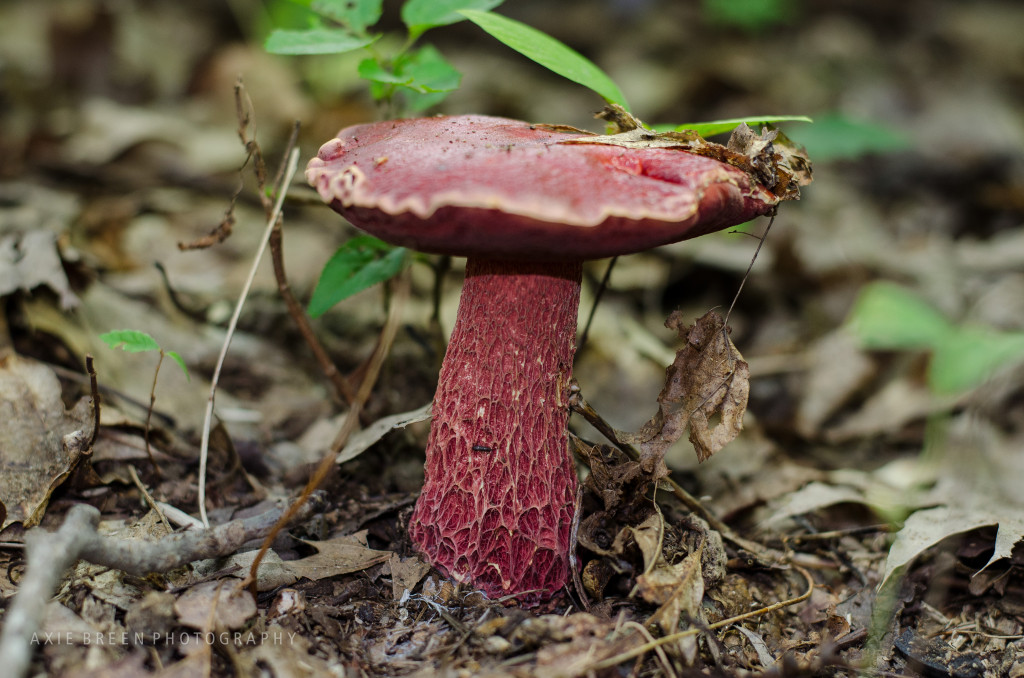 A very distinctive mushroom because the whole thing is dark red, it’s pretty big, and it has this internal-organ looking stem. In Mexico, the common name is panza agria, meaning “sour belly”.
A very distinctive mushroom because the whole thing is dark red, it’s pretty big, and it has this internal-organ looking stem. In Mexico, the common name is panza agria, meaning “sour belly”.
Frost’s Bolete, Apple Bolete (Exsudoporus frostii)

This year, we had a double puffball event in our yard. When I noticed them they were smaller than baseballs and then were visibly larger every day. Finally B picked one and ate it, after a brief “Alas, poor Yorick” moment, and then there was one. Last photo with a slice removed, to show its solid interior, with the slice like a piece of soft cheese or a delicate wedge of memoryfoam pillow.
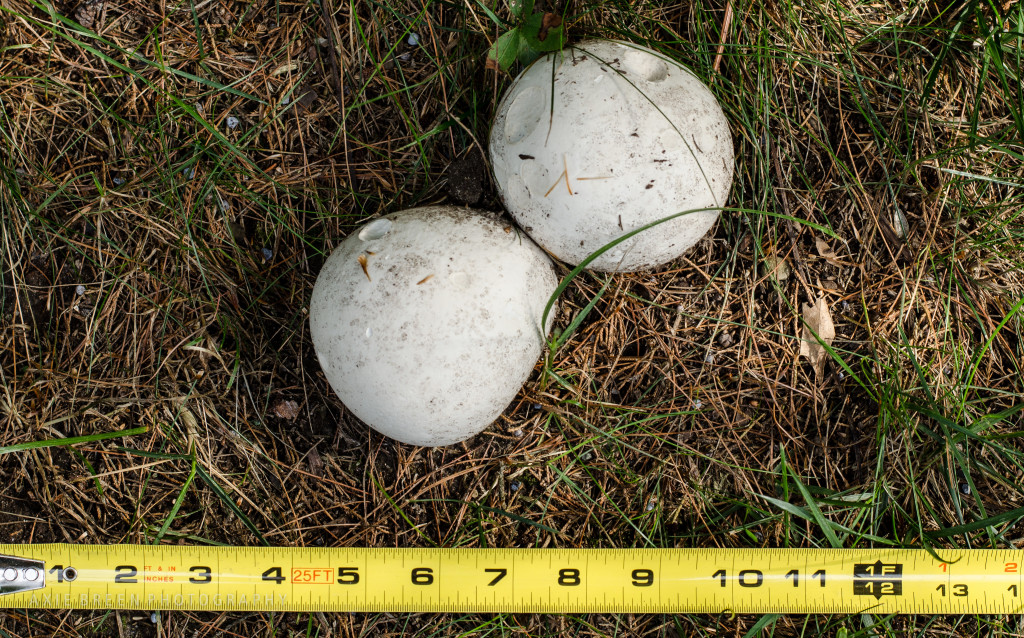
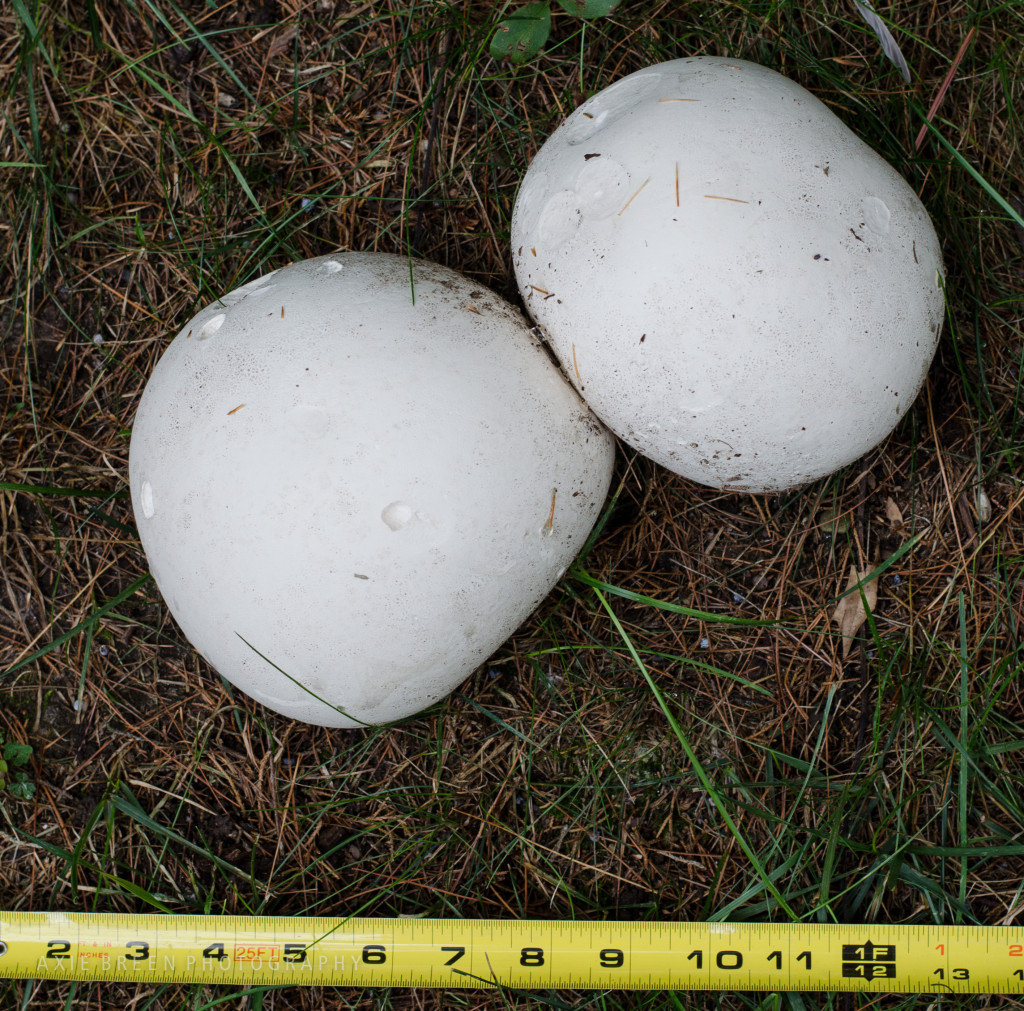
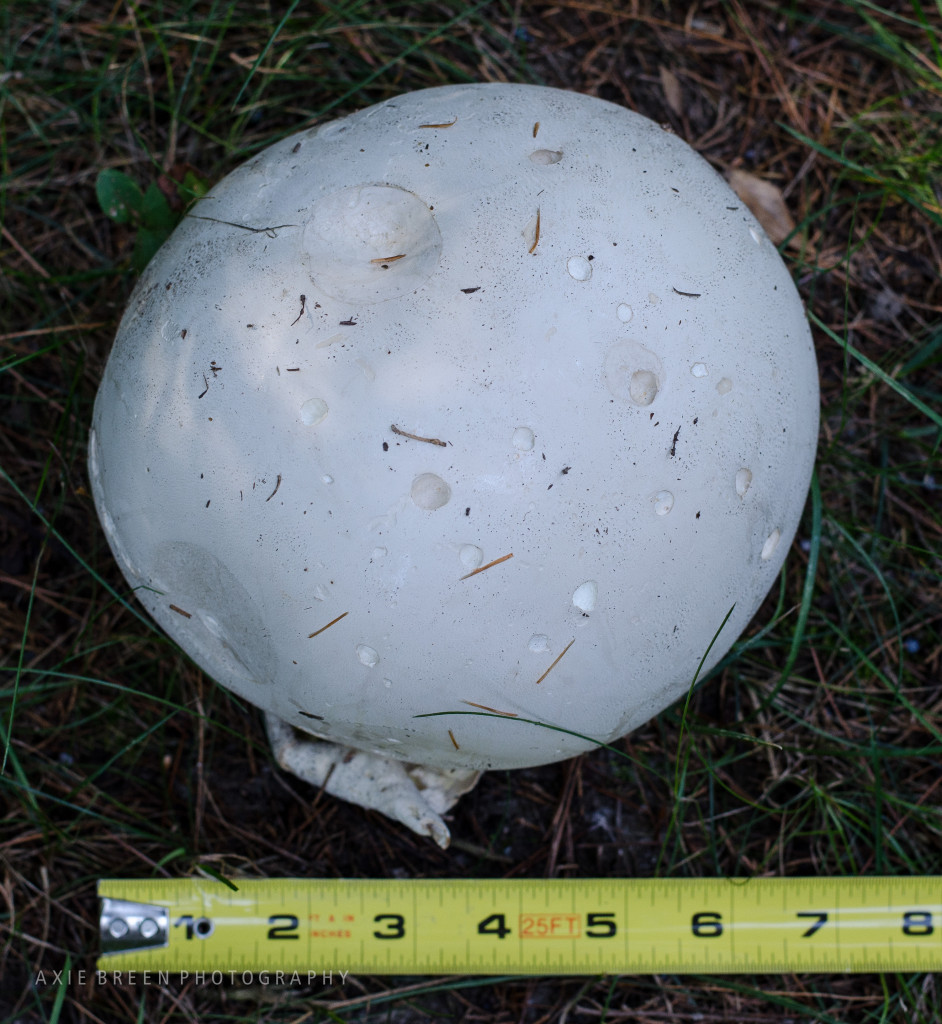
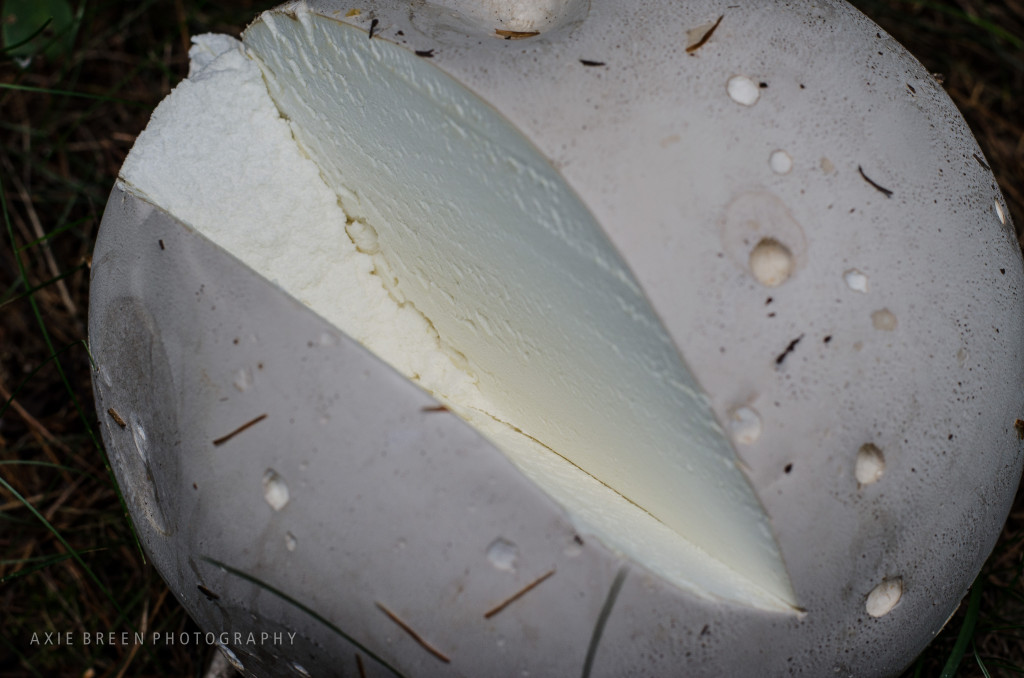 Found in temperate regions worldwide.
Found in temperate regions worldwide.
Giant Puffball (Calvatia gigantea)
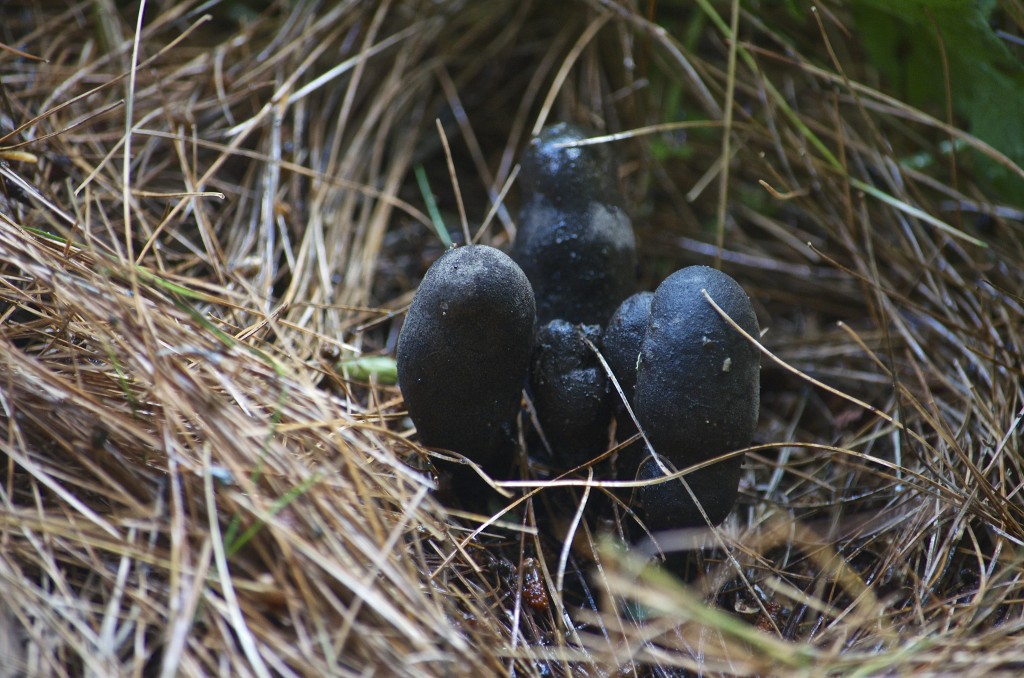 Look at this bizarre little fungus, like black sausages standing on end. In spring, they’re covered with a white powder (the spores). Part of the latin name, polymorpha, means it can take many forms, but it’s often in this club shape. Belongs to the same class of fungus as morels and truffles, but these are inedible. Common to eastern North America.
Look at this bizarre little fungus, like black sausages standing on end. In spring, they’re covered with a white powder (the spores). Part of the latin name, polymorpha, means it can take many forms, but it’s often in this club shape. Belongs to the same class of fungus as morels and truffles, but these are inedible. Common to eastern North America.
Dead Man’s Fingers (Xylaria polymorpha)
I’m new to identifying mushrooms, but apparently this is a poisonous mushroom that causes death by liver failure from eating just one. Identifying features: has a smooth white cap (sometimes with a tan tint in the center, like this one), gills, and a drapy skirt-like ring near the cap. The first stage of poisoning is called the incubation stage: 6-12 hours with no symptoms while it takes over without you noticing. Don’t eat white mushrooms!
Eastern North American Destroying Angel, Deadly Amanita, White Death Cap, Angel of Death (Amanita bisporigera)
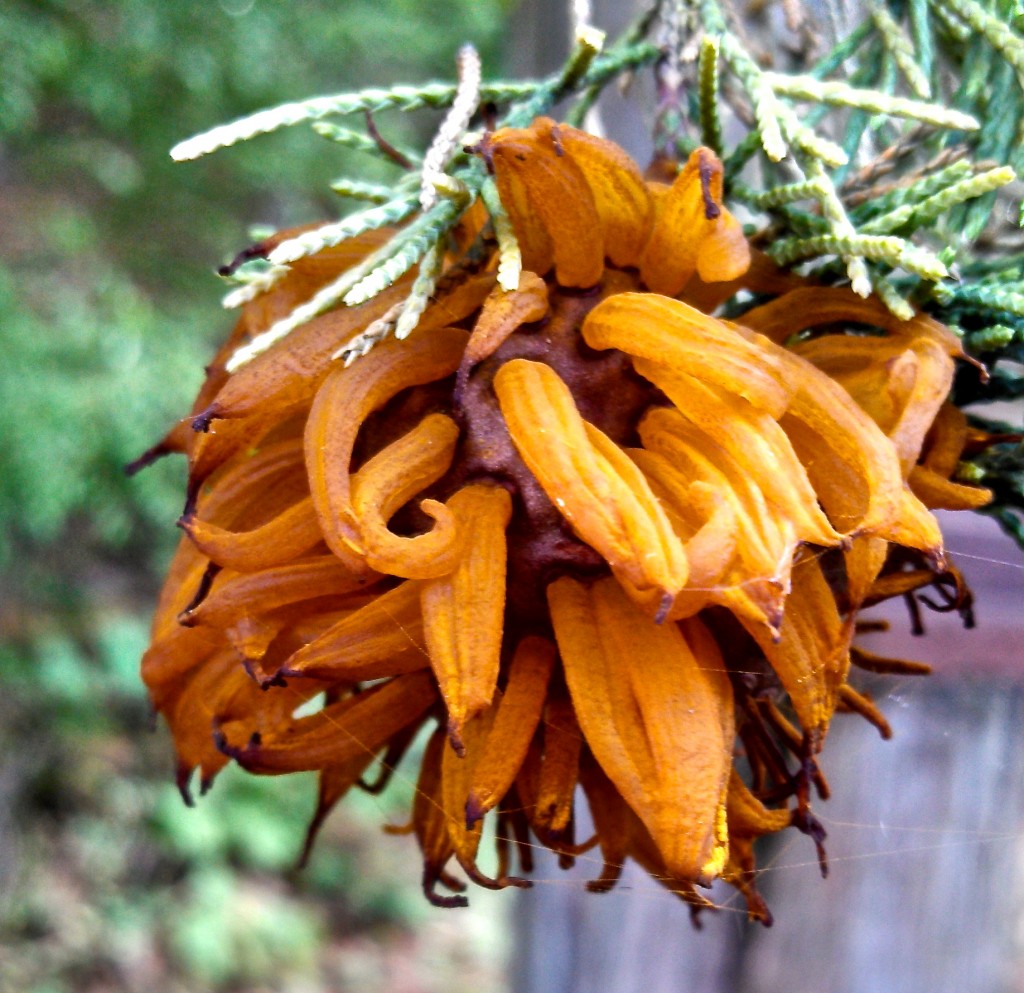 I’m including this parasitic fungus (which looks like a beached sea creature) because its life cycle is entwined with the wild crab apple trees. This fungus grows on eastern red cedars… but only if there is an apple tree nearby. To live, it requires two hosts: it has to alternate between an apple tree and a cedar. The fungal spores blow from the galls on the cedar onto the leaves of apple trees. They infect the apple tree and eventually the fungal spores from the apple tree blow back to the cedar and create new infections. Yuck.
I’m including this parasitic fungus (which looks like a beached sea creature) because its life cycle is entwined with the wild crab apple trees. This fungus grows on eastern red cedars… but only if there is an apple tree nearby. To live, it requires two hosts: it has to alternate between an apple tree and a cedar. The fungal spores blow from the galls on the cedar onto the leaves of apple trees. They infect the apple tree and eventually the fungal spores from the apple tree blow back to the cedar and create new infections. Yuck.
Cedar-Apple Rust (Gymnosporangium juniperi-virginianae)
A giant puffball grows in our back yard every fall. When I first noticed it, it had just emerged from the ground and was the size of a baby’s fist.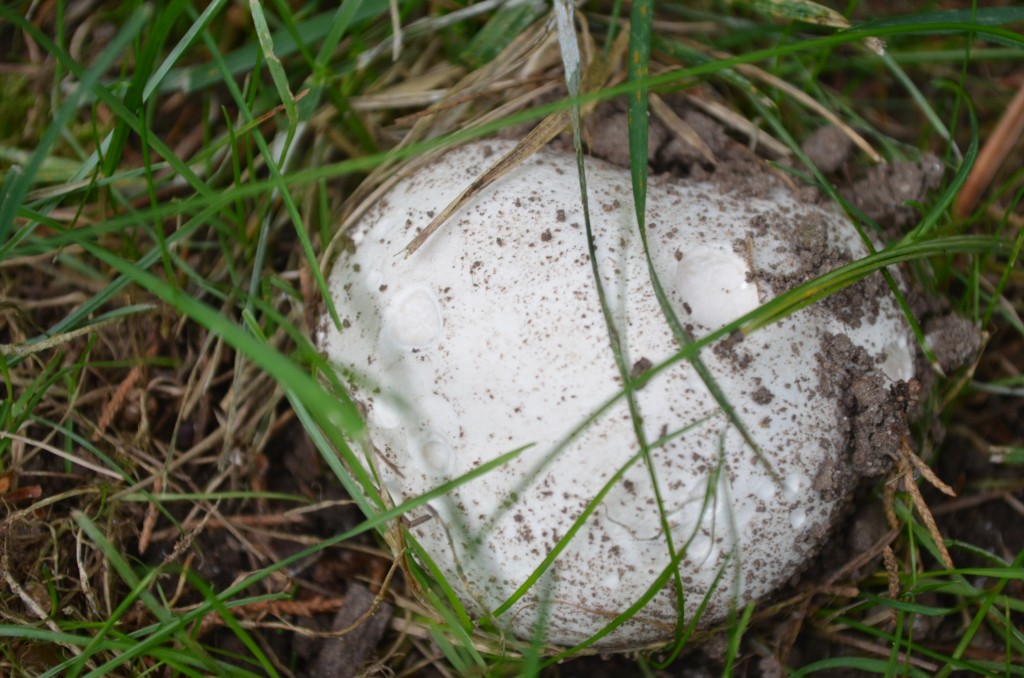 (September 26)
(September 26)
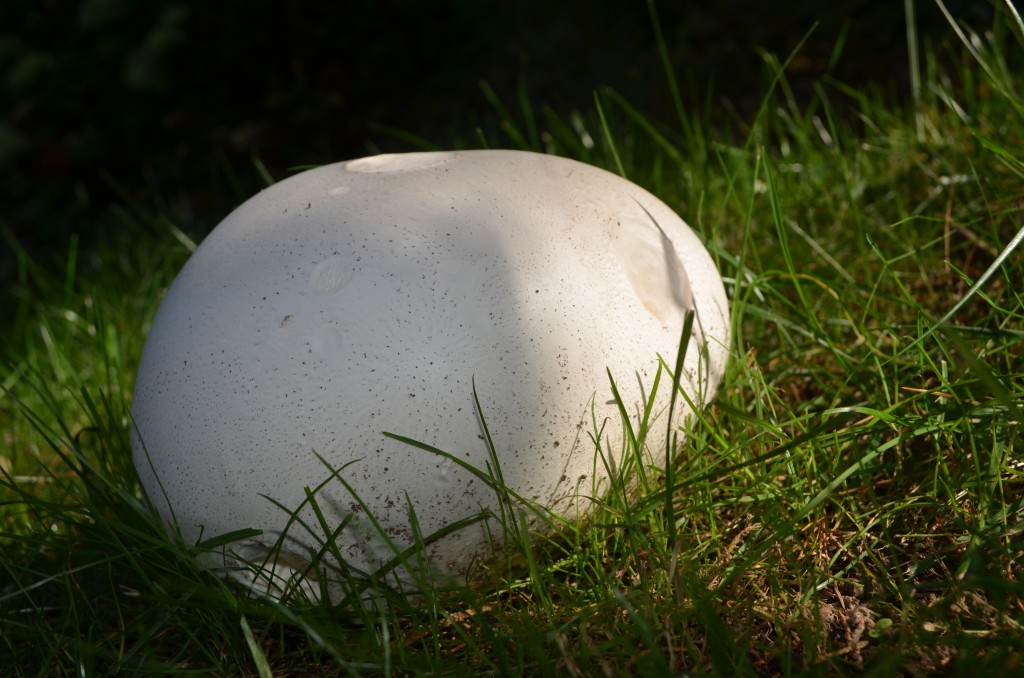
By October 1, just 5 days later, it was the size of a brain. We let it get a little bigger (3 more day’s worth of growth), and then picked it.
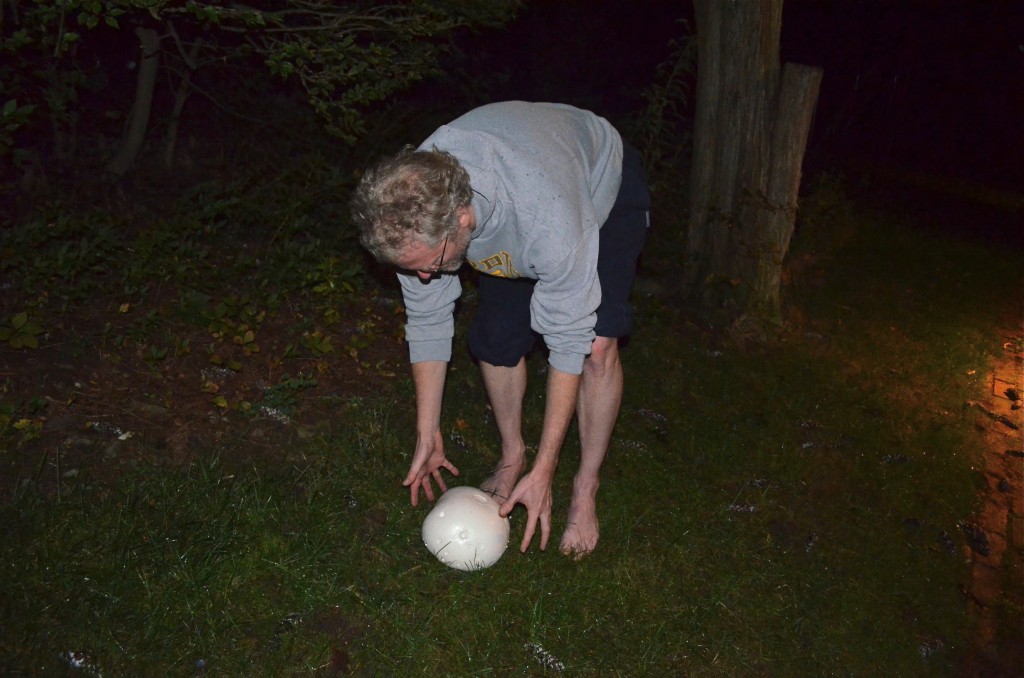
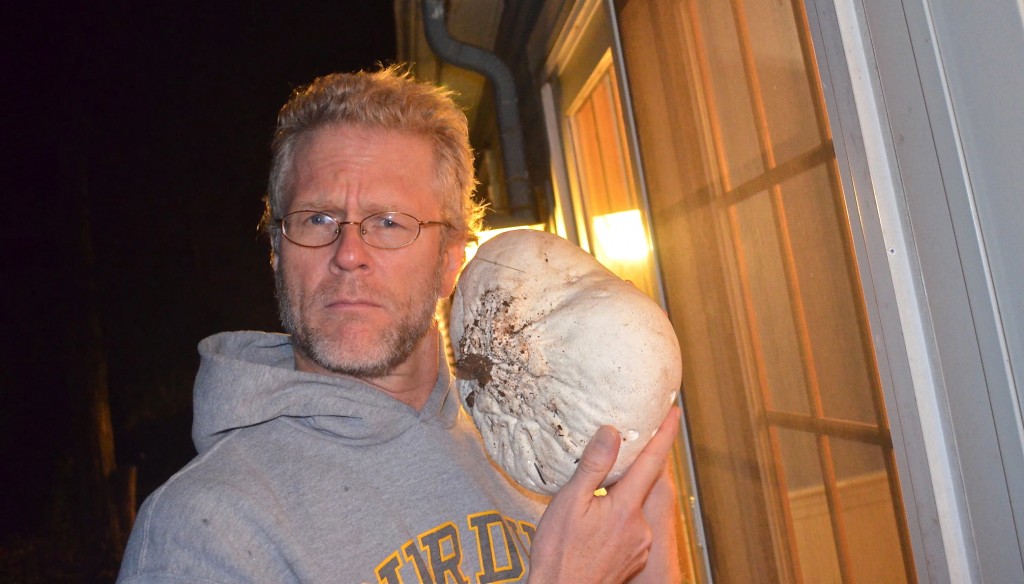 The consistency of the raw mushroom is like an especially dense, moist marshmallow. And there looks to be no circulatory system — they’re just solid white.
The consistency of the raw mushroom is like an especially dense, moist marshmallow. And there looks to be no circulatory system — they’re just solid white.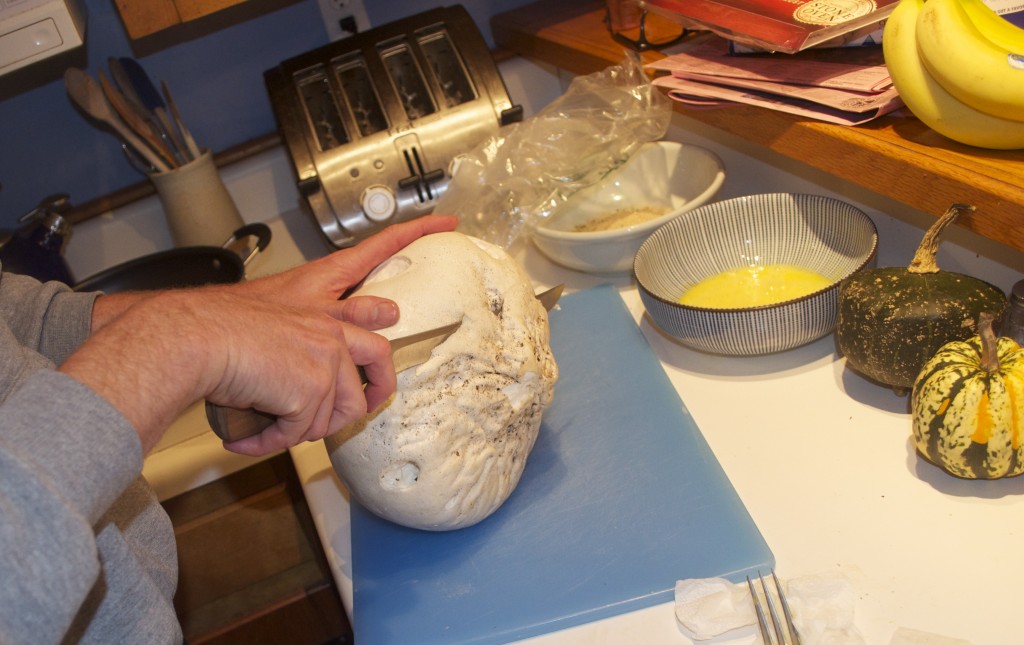
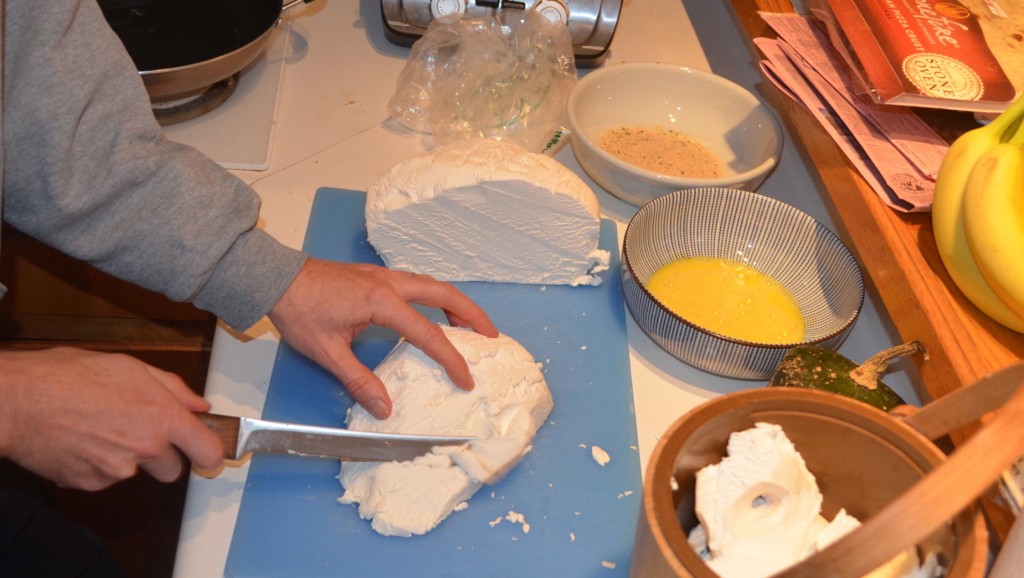
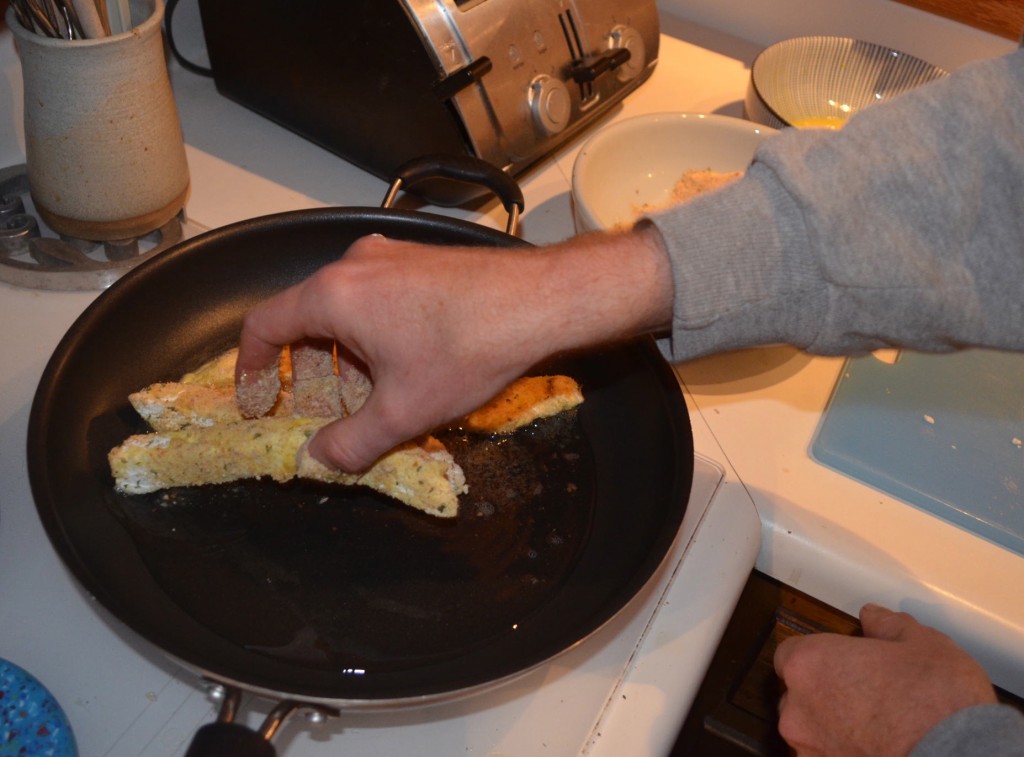
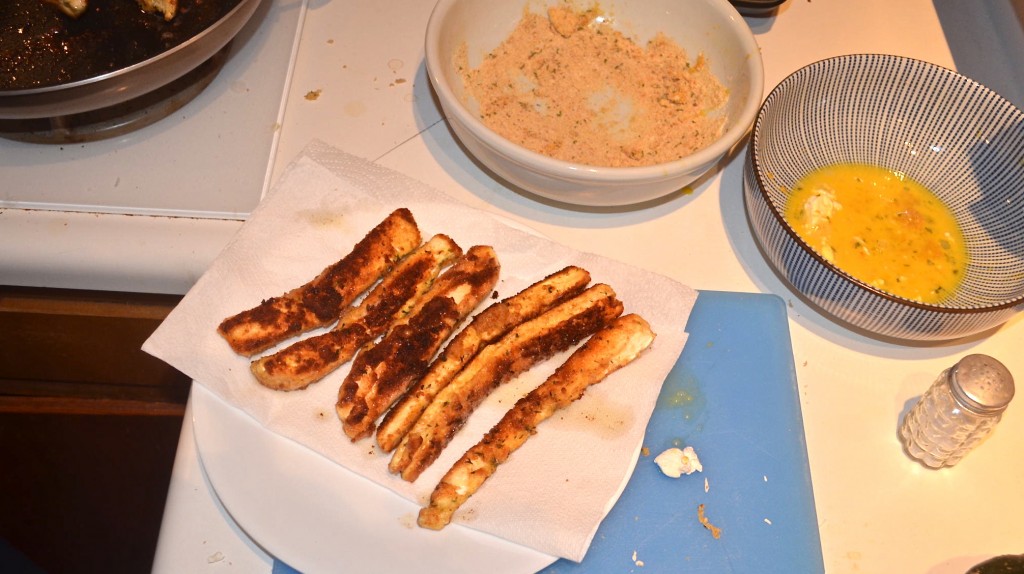
They were very good cooked — kind of like mozzarella sticks, melty and creamy. We also seared and froze some for later.
They’re edible only when young (when the inside is still pure white). Mature ones are greenish brown inside. All the spores are inside there — can be trillions of spores inside a single puffball. Native. Lycoperdaceae family.
Giant Puffball (Calvatia gigantea)
A.F. Irit was wondering what these feel like so we tried it. I expected it would feel velvety, dry, and hard. But actually it was not velvety dry, it was more like velvety damp, cold and kind of rubbery, like feeling a diving wet suit. Reputedly edible and absolutely choice if cooked (and very upsetting if eaten raw)! (No thanks!)
White-pored Chicken of the Woods (Laetiporus cincinnatus)
The procession of new flowers has slowed, but a little rain has brought out lots of fungus. Today we noticed this ruffly specimen. It’s edible, and not the same as another edible mushroom I posted, Hen-of-the-woods. Can be prepared like chicken, but only eat young fresh ones! And start with just a little! Psh.
Sulphur Shelf, Chicken-of-the-woods (Laetiporus sulphureus)